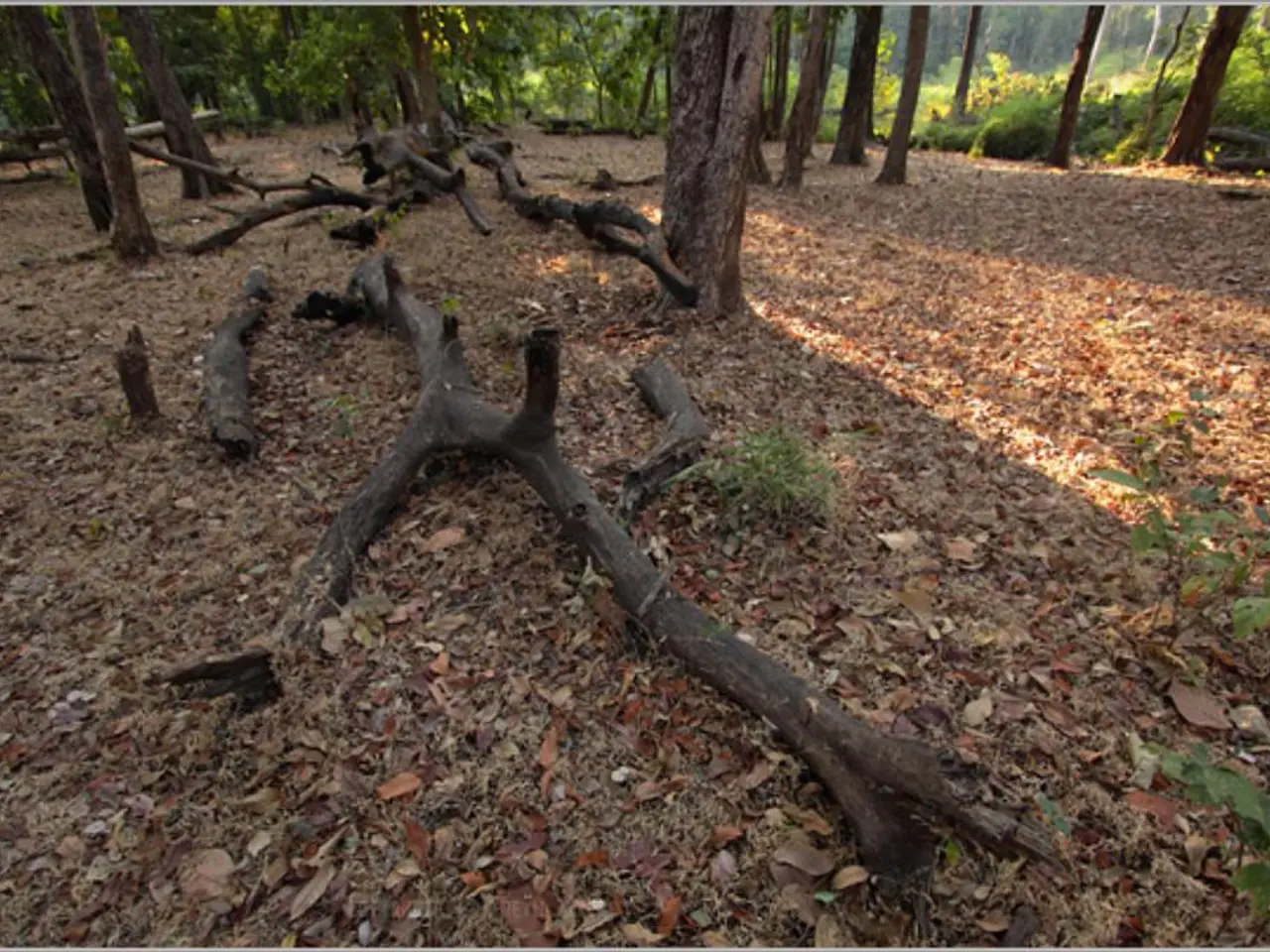Ideal Moment for Tree Planting: Essential Guidelines for Nurturing Your Seedling for Optimal Growth
Autumn Tree Planting: A Guide for Optimal Growth
Autumn is the perfect time to plant trees, providing the ideal conditions for root establishment and a strong start for the following growing season. Here's a step-by-step guide to help you plant a tree successfully this autumn.
Timing
Plant your tree after the leaves have fallen and before the soil freezes, usually in October. This timing allows roots to grow in warm soil without top growth stress [1][2].
Soil and Hole Preparation
Dig a hole 2-3 times wider than the root ball, but only as deep as the root ball’s height to avoid planting too deep. Use native soil rather than amended soil in the hole, but it may help to lightly amend the entire planting area’s topsoil with organic matter [4].
Root Preparation
For container-grown trees, gently tease out the roots from the root ball and prune some if necessary. For bare-root trees (usually planted in winter or early spring), soak the roots before planting [1][4].
Planting
Position the tree upright in the hole, firm the soil around the roots, and ensure the root flare is visible at soil level. For trees taller than 1.5m, use a single round, wooden stake for support, attaching the tree with a single tree tie at a third of the overall height [1].
Mulching
Apply an organic mulch to a depth of 10cm around the tree to reduce weed competition and water evaporation. However, avoid piling the mulch against the trunk [1].
Staking
For trees over 1.5m, use a short stake and tree tie to stabilize the tree until roots are established [1].
A Word of Caution
Avoid planting in frozen or waterlogged soil. Bare-root trees are generally best planted in the dormant season (late fall to early spring), but container-grown trees adapt well to autumn planting because the warm soil encourages root growth ahead of winter dormancy [1][2][3].
Choosing the Right Tree
When choosing a tree, consider its growth habits, size, and the environmental conditions of your planting site. Certain thin-barked species like birches, maples, and ash require careful attention to planting depth to ensure survival. Choose a tree with the appropriate qualities that match the local soil conditions [5].
Planting Tips from Kew
At Kew, the main planting season has been moved from spring to autumn. This change allows trees to establish roots before the following summer [6]. Mycorrhizal tree-planting products can also help a newly planted tree get started [7].
Maintaining Your New Tree
Keep the 1.5 metre diameter tree circle clear of weeds at all times. Provide water to newly planted trees, especially during periods of dry weather. Avoid using a strimmer near the tree as it can de-bark trees at the root collar and ultimately kill them [8].
Conclusion
Planting a tree in autumn can set it up for success. By following these steps, you can ensure that your tree grows strong and healthy, ready to provide beauty and benefits for years to come.
- To ensure a successful growth of your new tree, consider the environmental conditions of your planting site, selecting a tree that matches the local soil conditions to foster a healthy lifestyle within your home-and-garden.
- In the process of autumn tree planting, opt to plant your tree after the leaves have fallen and before the soil freezes, as this timing allows roots to grow in warm soil without top growth stress, promoting optimal growth.
- Gardening enthusiasts can enhance the environment in their gardens by applying an organic mulch to a depth of 10cm around the tree, helping to reduce weed competition and water evaporation, thereby benefiting the plants in the surrounding home-and-garden.




